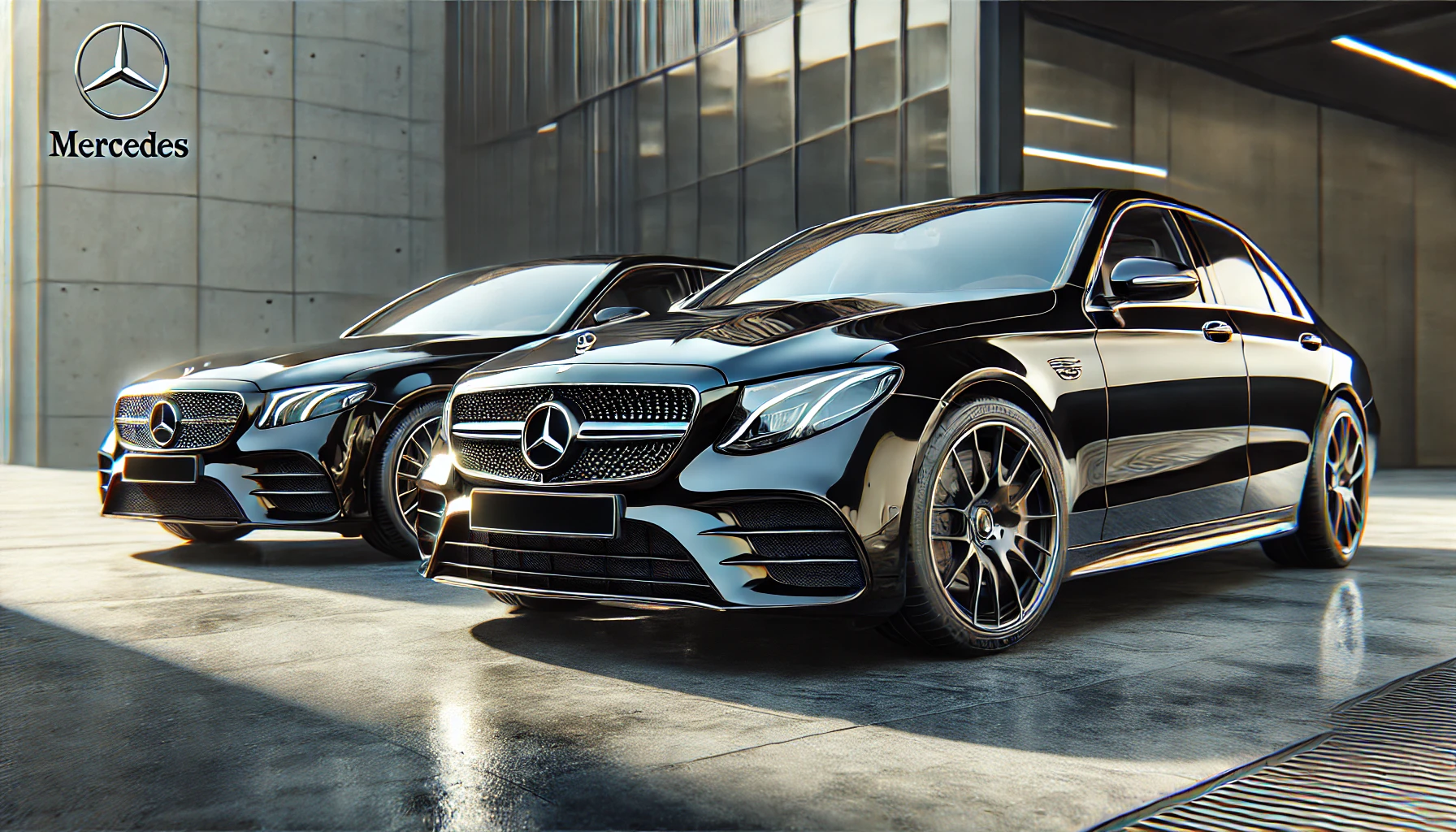
For chauffeurs and luxury transportation providers, choosing between the Mercedes E-Class and Mercedes S-Class can be challenging. Both models are renowned for their excellence, but they cater to slightly different needs and client expectations. Let’s explore the differences in technical specifications, appearance, value, usage, benefits, and drawbacks to help you make an informed choice.
Technical Differences
Mercedes E-Class
Engine Options: A range of engines from efficient 4-cylinder to V6 options.
Technology: Equipped with advanced features like MBUX infotainment, but fewer premium options compared to the S-Class.
Ride Quality: Excellent handling and comfort, ideal for daily use.
Fuel Efficiency: More fuel-efficient than the S-Class due to smaller engine options.
Mercedes S-Class
Engine Options: Includes high-performance engines such as V8 and hybrid options.
Technology: Features cutting-edge innovations like augmented reality navigation, advanced driver-assistance systems, and rear-seat entertainment.
Ride Quality: Superior ride comfort with air suspension and noise-cancellation technology.
Fuel Efficiency: Lower fuel efficiency due to larger engines and heavier build.
Appearance Differences
Mercedes E-Class
Sleek and modern design with a focus on elegance.
Compact size compared to the S-Class, making it easier to navigate in urban environments.
Standard LED headlights and less pronounced grille design.
Mercedes S-Class
A more imposing and luxurious design, often referred to as a "rolling statement."
Larger dimensions with chrome accents, a wider grille, and signature multi-beam LED headlights.
Distinctive rear-end design with horizontal taillights emphasizing its premium status.
Value Differences
Mercedes E-Class: More affordable upfront, with lower maintenance costs. Ideal for chauffeurs targeting mid-level corporate and airport transfer clients.
Mercedes S-Class: Higher price tag but greater long-term value for premium clients. Retains resale value better due to its luxury status.
Usage Count Differences
Mercedes E-Class: Widely used for corporate transportation, daily chauffeur services, and airport transfers. Preferred for short to medium-distance travel.
Mercedes S-Class: Primarily used for VIP clients, luxury events, and long-distance travel. Favored for occasions requiring the highest levels of comfort and prestige.
Benefits
Mercedes E-Class
Affordable luxury option.
Easier maneuverability in congested cities.
Lower running costs, including fuel and maintenance.
Mercedes S-Class
Unmatched luxury and comfort.
Advanced technology for passenger and driver convenience.
High prestige, making it ideal for premium clients.
Non-Benefits
Mercedes E-Class
Lacks some of the advanced features and opulence of the S-Class.
Smaller cabin space, especially in the rear.
Mercedes S-Class
Higher purchase and maintenance costs.
Larger size may make it less practical in tight urban areas.
Countries Where They Are Most Used
Mercedes E-Class
Germany: Popular for business transportation and executive commuting.
United Kingdom: Common for airport transfers and corporate clients.
United States: Frequently used for mid-level executive services.
Mercedes S-Class
United Arab Emirates: Preferred for VIP clients and luxury events.
China: Widely used for high-level executives and government officials.
United States: Favored for special occasions and premium services.
Which One Should You Choose?
The choice between the Mercedes E-Class and S-Class depends on your target market and business model. If you’re looking for a cost-effective luxury vehicle for frequent, mid-level clients, the E-Class is an excellent choice. For those catering to VIPs and premium clientele, the S-Class offers unparalleled luxury and status, justifying its higher cost.